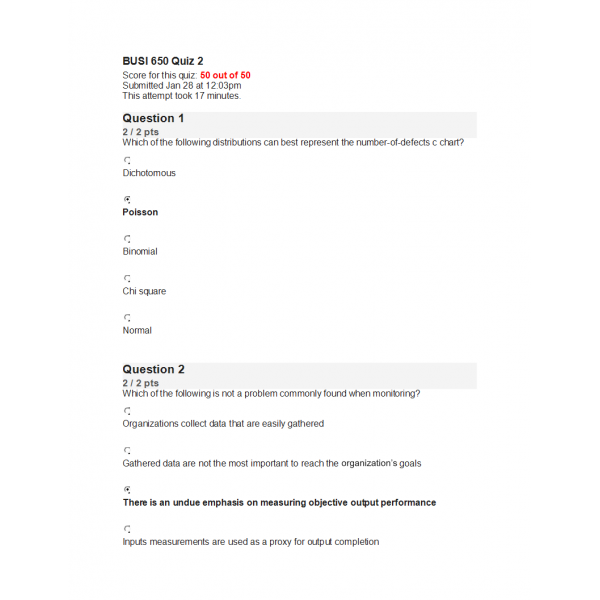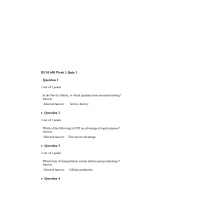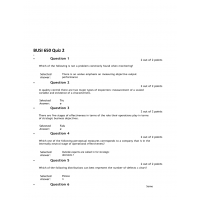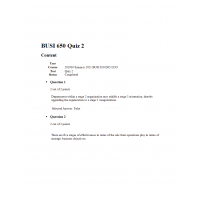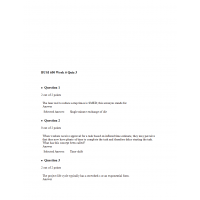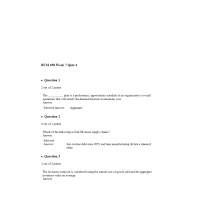BUSI 650 Week 3 Quiz 2 (Ver 3)
BUSI 650 Week 3 Quiz 2
1. Which of the following distributions can best represent the number-of-defects c chart?
2. Which of the following is not a problem commonly found when monitoring?
3. There are five stages of effectiveness in terms of the role their operations play in terms of strategic business objectives.
4. In quality control there are two major types of inspection: measurement of a scaled variable and existence of a characteristic.
5. Benchmarking is a process that helps compare a company against its competitors on a variety of relevant indicators.
6. Which of the following is not a step in constructing control charts?
7. Among the best-known companies that use customer satisfaction surveys to evaluate service quality in various industries is:
8. Which one of the following perceptual measures corresponds to a company that is in the internally neutral stage of operational effectiveness?
9. Which of the following characteristics makes it easier to measure the quality of a service, relative to that of a product or facilitating good?
10. The balanced scorecard approach relies not only on financial performance measures, but includes customers, internal business processes, and organizational learning and growth.
11. Business process design (BPD) is also adequately named the following except:
12. Technology usage is not as important as reorganization in business process design.
13. A green belt has a broad knowledge of the six sigma toolkit, but not nearly as much in the tools as yellow belts, black belts and master black belts.
14. Six Sigma is better applied on manufacturing than service operations.
15. The following are shortcomings associated with analyzing problems “one factor at a time” (also known as OFAT and 1FAT) except:
16. Which of the following is false about quality function deployment (QFD)?
17. Which of the following tools and methodologies is not used in the Measure Phase of Six Sigma?
18. All of the above are used
19. One aspect that differentiates Six Sigma from other earlier process improvement programs including total quality management and reengineering is that with Six Sigma:
20. The relationship between the natural variation in the production system and the product’s design specifications can be quantified using:
21. Which term compares an organization’s processes with the best practices to be found in its industry or others?
22. Lean Sigma is a combination of Six Sigma and lean tools appropriate when both too much variation and waste exist in a process.
23. Six Sigma is better applied on for-profit than in nonprofit organizations.
24. DMAIC stands for:
25. A literal interpretation of six-sigma is:
26. Benchmarking is another name for QFD (quality function deployment).
| Institution & Term/Date | |
| Term/Date | Liberty University |
-
$9.99

